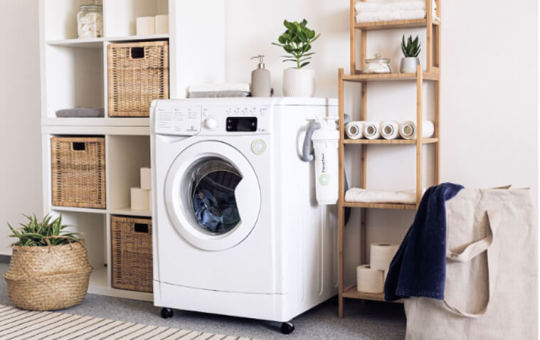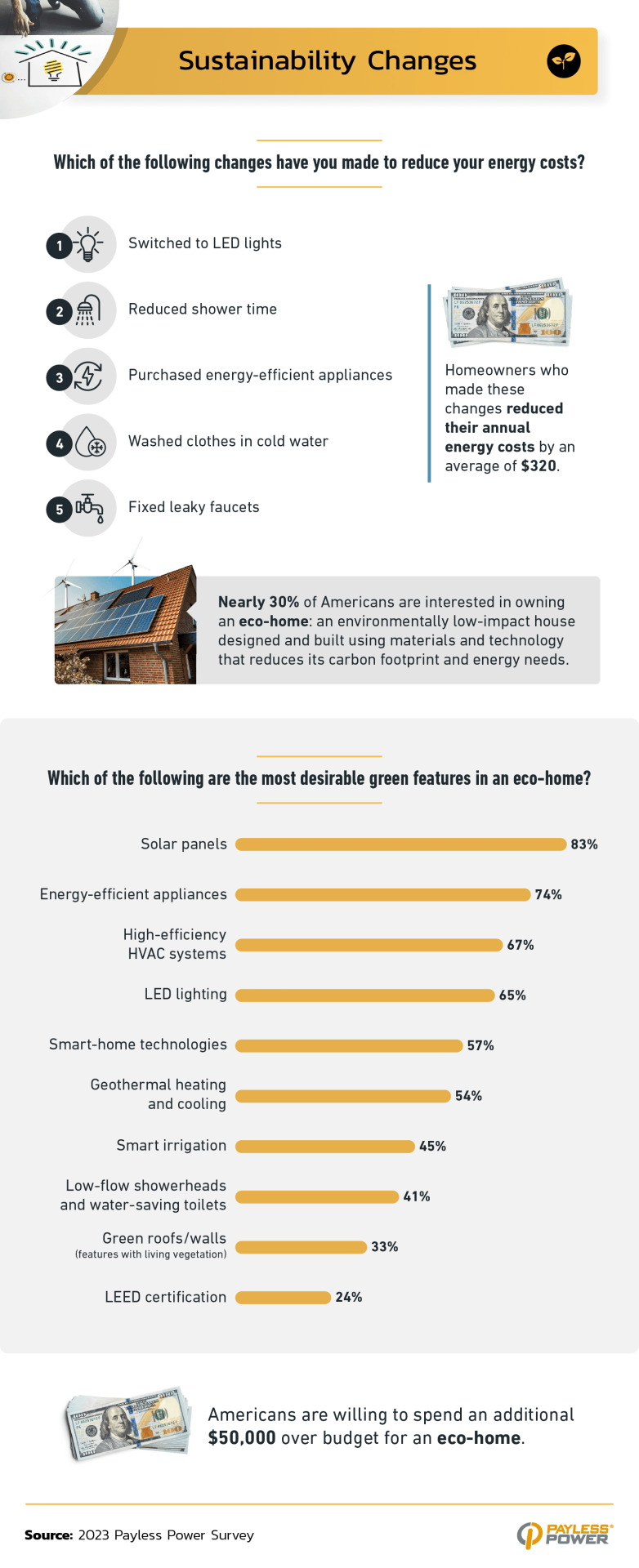#energystar
Text

Emerson Sensi Wi-Fi Smart Thermostat for Smart Home, DIY, Works With Alexa, Energy Star Certified, ST55
Sensi smart thermostats are designed for energy savings and data privacy – to give you full control of your home HVAC. With over 100 years of HVAC experience and manufactured by Emerson, you know our expertise already, even if you didn’t realize it. Emerson produces many of the HVAC parts that our smart thermostats control, so you can feel confident in the product you put on your wall. With our top-rated mobile app and easy installation process, customers of all comfort levels can make the switch to a Sensi smart thermostat. In addition, our customer service team of HVAC experts is always available to help you through any questions you might have. *For more information on Compatibility, Energy Savings, and Privacy Protection, please refer to the “Product Documentation” section below.
0 notes
Text
Otvor za Oticanje vode u Frižideru zapušen
Mnogi ljudi nisu svesni da njihov frižider sadrži otvor za odmicaje. Ovaj odvodni otvor je tu da uhvati vlagu koja se sakuplja u frižideru, posebno ona koja se nakuplja na zadnjem zidu frižidera. Ako se otvor za odmicaje zapuši, to može izazvati probleme za ostatak vašeg frižidera. Obično, otvor se nalazi u osnovi zadnjeg zida, s urezima koji vode prema njemu kako bi vodili kapljice vlage.
Identifikacija problema s otvorom za odmicaje u frižideru Sigurno ćete znati kada je otvor za odmicaje u vašem frižideru zapušen zbog uticaja koji ima. Bez izlazne tačke za vodu, ona obično zadržava na donjoj polici i u kutiji ili fioci za povrće. To može uticati na kvalitet vaše hrane, čineći je gnjecavom i potencijalno doprinoseći brzom razvoju buđi.
Malo možete učiniti da sprečite zapušavanje otvora za odmicaje, jer zavisi od toga koliko ima ostataka hrane u frižideru u bilo kojem trenutku. Redovnim čišćenjem frižidera možete sprečiti da se ostaci smeste u ovaj otvor i blokiraju ga.
Kako očistiti zapušeni otvor za odmicaje u frižideru Očišćenje zapušenog otvora za odmicaje u frižideru je jednostavan i bezbolan zadatak, koji će ponovo dovesti vaš frižider u red.
Korak 1 – Prvo, treba pokupiti sve višak vode koji se sakupio na dnu frižidera i u fioci ili kutiji na dnu.
Korak 2 – Kada se osuši, možete očistiti ostatke iz otvora. To možete učiniti ili pomoću određenog alata za čišćenje otvora koji dolazi uz frižider, ili pomoću slamčice, pamučne cunje ili četkice za cevi.
Korak 3 – Gurnite bilo koji odabran alat u otvor, ali nemojte ga pustiti, jer će ga to dodatno zapušiti. Ovo bi trebalo pomoći da se otvor očisti za nekoliko sekundi.
Korak 4 – Na kraju, kao što smo već napomenuli, pokušajte održavati frižider što je moguće čišćim kako biste izbegli stalno čišćenje otvora za odmicaje.
Ovaj postupak možda ćete morati ponavljati s vremena na vreme, ali ako se vaš frižider i dalje puni vodom i nakuplja na dnu ili policama, možda imate ozbiljniji problem
#Frižider#CurenjeVode#OdržavanjeFrižidera#PopravkaAparata#VodovodUFrižideru#Ledomat#OdmrzavanjeFrižidera#BlokiraniOdvodZaOdmrzavanje#NogiceFrižidera#Kondenzacija#ProblemiSVodomUKući#Električar#SigurnosneMere#LibelaZaRavnotežu#PopravkaKućnihAparata#RashladnoSredstvo#IceMaker#ENERGYSTAR#ProfesionalneUsluge#TehničkiServis#Hladnjak#VodaIspodFrižidera#TehničkaPodrška#KućniAparati#CeviZaVodu#BezbednostAparata#OštećenjeVodovoda#ServisZaKućneAparate#PuštanjeVode#TehničkiResursi
0 notes
Text
Unlocking Efficiency and Comfort: A Guide to Maximize Your Windows and Reduce Energy Bills
Maximizing Your Windows for Efficiency and Comfort
According to the U.S. Department of Energy, about 30% of your home's heating and cooling energy is lost through your windows. Upgrading your windows can significantly improve efficiency, keeping you comfortable year-round while reducing energy bills.
For Windows in Decent Condition:
If your windows are in good condition, there are things you can do to improve efficiency while saving money on energy costs – rather than having to replace the windows.
First off, check for leaks. You’ll want to caulk and weatherstrip areas as needed. When looking at weatherstripping, consider the window's location and choose an appropriate option for the weather, temperature changes, and general use associated with its location.
It will be important to consider if the panes slide up and down, sideways, or outward, as you’ll want the weatherstripping to seal well when the door or window is closed; however, it will also need to open freely.
Energy-Efficient Windows:
Investing in energy-efficient windows is a smart choice, especially if you plan on staying in your home for a decade or more. These windows incorporate advanced materials and features like multiple glass panes, window spacers, gas fills, and insulated frames to create a thermal barrier. They harness solar energy to heat the house or prevent excessive heat buildup.
Consider the following tips from Energy.Gov when exploring energy-efficient windows:
- Look for the ENERGY STAR and NFRC labels.
- Opt for gas-filled windows with low-e coatings in colder climates to minimize heat loss. In warmer climates, select coatings that reduce heat gain.
- Choose a low U-factor for better thermal resistance in colder climates; the U-factor is the rate at which a window conducts non-solar heat flow.
- Look for a low solar heat gain coefficient (SHGC). SHGC is a measure of solar radiation admitted through a window. Low SHGCs reduce heat gain in warm climates.
- Choose windows with both low U-factors and low SHGCs to maximize energy savings in temperate climates with both cold and hot seasons.
- Look for whole-unit U-factors and SHGCs, rather than center-of-glass U-factors and SHGCs. Whole-unit numbers more accurately reflect the energy performance of the entire product.
Learn more about energy performance ratings for Windows. If you have any questions or need design assistance, contact a PARR Windows expert. Let's make your windows work for you!
#EnergyEfficientWindows #HomeImprovement #WindowUpgrades #PARRWindowsExpert
Read the full article
#CaulkingTips#ComfortableLiving#ComfortAtHome#CoolingEfficiency#DepartmentOfEnergy#DIYHome#EcoFriendlyHome#EfficientHomeDesign#EfficientWindows#EnergyStar#EnergyEfficiency#EnergyEfficientHomes#EnergyPerformance#EnergyRatings#EnergySmartWindows#EnergyStarWindows#ExpertDesignTips.#GasFilledWindows#GreenLiving#HomeComfort#HomeEfficiencySolutions#HomeEnergySavings#HomeHeating#HomeImprovementTips#HomeRenovation#HomeUpgradeIdeas#HouseGoals#InsulatedFrames#LowECoatings#NFRCLabels
0 notes
Text
AppliancExplore the significance of the BEE Star Label on household appliances. Learn how this label, issued by the Bureau of Energy Efficiency, signifies energy-efficient products. Discover how choosing BEE Star-rated appliances not only conserves energy but also saves money on utility bills, contributing to a more sustainable and eco-friendly lifestyle.es with a BEE Star Label: Energy-Efficiency at Its Best

#BEEStarLabel#EnergyEfficiency#EcoFriendly#SustainableLiving#EnergySavings#GreenAppliances#HomeAppliances#EnergyConservation#SaveEnergy#EnvironmentallyFriendly#SmartAppliances#EnergyStar#GoGreen#ReducingCarbonFootprint#EnergyRating
0 notes
Photo

Porch in Boston
Inspiration for a large craftsman front porch remodel with decking and a roof extension
0 notes
Photo

“Americans are willing to spend an additional $50,000 over budget for an eco-home: an environmentally low-impact home designed and built using materials and technology that reduces its carbon footprint and energy needs.”
(via Going Green: How Americans Are Making Their Homes Eco-friendly - Payless Power)
0 notes
Text

🌟 7 Ways to Make Your Binge-Watching Eco-Friendly https://www.energysustainableworld.info/2022/11/7-ways-to-make-your-binge-watching-eco.html
0 notes
Text
How to Choose the Right Energy-Efficient Central Heating Circulation Pump
With so many energy-efficient central heating circulation pumps on the market, choosing the right one for your home can seem like a daunting task. However, by considering a few key factors, you can ensure that you select a pump that meets your heating needs while maximizing efficiency and savings.
The first thing to consider when choosing a new pump is the size and layout of your home. Larger homes with multiple floors or zones may require a more powerful pump to ensure adequate circulation of hot water to all areas. Conversely, smaller homes or apartments may be able to make do with a smaller, less powerful pump.

Next, you'll want to consider the energy efficiency rating of the pump. Look for pumps that have earned the ENERGY STAR label, which indicates that they meet strict efficiency guidelines set by the Environmental Protection Agency. ENERGY STAR pumps are typically up to 30% more efficient than standard models, helping you to save money on your energy bills while reducing your environmental impact.
Additionally, pay attention to the pump's flow rate and head pressure capabilities. A higher flow rate means that the pump can move more water through your system in less time, while a higher head pressure indicates the pump's ability to overcome resistance in your pipes and radiators. Ideally, you'll want a pump with a balance of both to ensure efficient and effective operation.
Finally, consider any additional features or technologies that the pump may offer. For example, some pumps come with built-in variable speed settings, allowing you to adjust the flow of water to match your specific heating needs. Others may incorporate smart technology that allows for remote monitoring and control of your heating system, maximizing efficiency and convenience.
In conclusion, choosing the right energy-efficient central heating circulation pump is essential for maximizing comfort, efficiency, and savings in your home. By considering factors such as size, efficiency rating, flow rate, and additional features, you can select a pump that meets your needs and helps you to achieve your energy-saving goals.
0 notes
Video
RGB Smart Lights Ultra Thin 4inch 9W 720lm Round Colorful Smart Control ...
#youtube#ETL ES FCC RGBSmartLights RGBSmartLight CETLUS FCC LEDRGBSmartLights LEDRGBSmartLight EnergyStar Lighting Lightings LEDLight LEDLights Chine
0 notes
Text
We threw our shoes at God
And I heard you praying for clean runoff
And we trashed your AC and its broken freon coils
It wasn't EnergyStar
It wasted BTUs
It wasn't right
But it was there because I wanted you to be cool
I wanted you to be cool
It cooled off and we got a reaction
I wanted you to be cool
hi that's like the gentlest song i've ever heard.
2 notes
·
View notes
Note
talking about dragon's food consumption like appliances using up apparel. energystar for dragons
4 notes
·
View notes
Text

ecobee3 Lite Smart Thermostat – Programmable Wifi Thermostat – Works with Siri, Alexa, Google Assistant – Energy Star Certified – DIY Install, Black
Sleek design and elevated comfort meet impactful energy savings. Save up to 23% annually on heating and cooling costs with ecobee3 lite, the smart thermostat that helps you live smarter and save more. Get a new handle on control and convenience. Manage your comfort from anywhere with the ecobee app on your iOS or Android mobile device. Compared to a hold of 72°F. Occupancy detection manages temperature automatically.
#ecobee3Lite#SmartThermostat#WifiThermostat#Siri#Alexa#GoogleAssistant#EnergyStar#DIYInstall#BlackThermostat#HomeAutomation
0 notes
Text
3 razloga zašto moj frižider ispušta vodu

Vaš frižider može curiti vodu iz nekoliko razloga, a evo nekih mogućih uzroka i šta možete uraditi da rešite problem.
Uzrok br. 1: Blokiran vodovod Na mnogim modelima frižidera postoji vodovod koji snabdeva frižider vodom za piće i led. Kada se ovaj vodovod blokira, dolazi do curenja vode ispod frižidera. Blokirani vodovod može takođe sprečiti proizvodnju dovoljne količine leda u ledomatu. Ako imate blokiran vodovod, primetićete da vam izlaz vode ne funkcioniše ispravno ili uopšte ne funkcioniše.
Uobičajeni popravci Prvo isključite frižider. Zatim treba zatvoriti ventil za vodu. Ove sigurnosne mere sprečiće oštećenje frižidera ili vas tokom radova. Zatim treba pregledati vodovod da biste otkrili oštećenja. Ako je vodovod ozbiljno oštećen, treba ga zameniti. Električar ili serviser aparata obično to mogu brzo obaviti pomoću ključa i novog vodovoda.
Ako vodovod izgleda potpuno neoštećen osim nekog blokiranja, verovatno je došlo do stvaranja leda u vodovodu koje je uzrokovalo blokadu. U tom slučaju samo treba ostaviti frižider isključenim oko četiri sata da bi se led otopio.
Uzrok br. 2: Blokiran odvod za odmrzavanje Zagušeni odvod za odmrzavanje najverovatniji je uzrok curenja vode iz frižidera. Ovod za odmrzavanje sprečava zamrzavanje frižidera. Frižider se automatski odmrzava i kaplje voda u posudu. Ponekad će čestice hrane ili drugi otpad zapušiti odvod za odmrzavanje, što može dovesti do stvaranja leda.
Uobičajeni popravci Da biste rešili problem, pokušajte otopiti led. To možete učiniti tako što ćete sipati toplu vodu u špric ili sličnu posudu i potom je sipati niz odvod u zamrzivaču. Ako ovo ne pomogne, neki ljudi pokušavaju koristiti čistač cevi ili žicu da razbiju led. Ako je zagušenje predaleko u crevu, možda ćete morati pomeriti frižider i odvojiti ventil.
Uzrok br. 3: Neujednačen frižider Vaš frižider ne mora nužno biti potpuno ravan. Zapavo, prednji deo frižidera treba da bude malo viši kako bi se rashladno sredstvo pravilno kretalo. Ako rashladno sredstvo ne može pravilno da se kreće, može doći do kondenzacije i stvaranja lokvi ispod frižidera. Problemi vezani za neravnotežu frižidera su verovatniji da će se pojaviti kada prvi put dobijete frižider ili nakon što ga premestite.
Uobičajeni popravci Prvo, koristite libelu da biste utvrdili koliko je frižider zaista ravan. Libelu treba postaviti na pod frižidera, a ne na fioku ili policu. Možda ćete morati podesiti noge frižidera ako libela pokaže da nije ravno. Možda će vam trebati pomoć da pomerite frižider i podesite noge.
Kada pozvati profesionalce U određenom trenutku može biti potrebno pozvati profesionalce da poprave curenje. Mnogi ljudi nemaju nikakvo znanje o kućnim aparatima. Ako niste upoznati s održavanjem frižidera, najbolje je odmah pozvati profesionalca. Ako ste učinili sve što je u vašoj moći da rešite problem, ali se i dalje pojavljuje, možda ćete takođe morati pozvati profesionalca.
Profesionalac će pregledati stanje aparata kako bi utvrdio da li vam je potreban novi frižider ili popravka. Ako vam je potreban novi frižider, kupite onaj s ENERGY STAR nalepnicom i postavite ga na pravilan način.
#Frižider#CurenjeVode#OdržavanjeFrižidera#PopravkaAparata#VodovodUFrižideru#Ledomat#OdmrzavanjeFrižidera#BlokiraniOdvodZaOdmrzavanje#NogiceFrižidera#Kondenzacija#ProblemiSVodomUKući#Električar#SigurnosneMere#LibelaZaRavnotežu#PopravkaKućnihAparata#RashladnoSredstvo#IceMaker#ENERGYSTAR#ProfesionalneUsluge#TehničkiServis#Hladnjak#VodaIspodFrižidera#TehničkaPodrška#KućniAparati#CeviZaVodu#BezbednostAparata#OštećenjeVodovoda#ServisZaKućneAparate#PuštanjeVode#TehničkiResursi
0 notes
Text
Perfect Dishwashing: What's The Best Time To Run a Dishwasher?
Dishwashers represent beloved workhorses dutifully tidying post-dinner wreckage into pristine sparkle again come the next mealtime. With energy costs rising and putting strain on household budgets, determining the best time to run the dishwasher is becoming more important. Thus, you need to find the right balance between energy efficiency, cost savings, and practicality when deciding when it's optimal to wash dishes.
Running the dishwasher overnight seems harmless. However, small optimizations can make a meaningful difference. Delaying the start cycle to use cheaper electricity rates at night, fully loading dishes, maximizing wash cycles, or upgrading to an EnergyStar dishwasher that conserves water and uses sensors can improve cost savings and energy conservation without sacrificing convenience.
This article summarizes key considerations around dishwasher technology enhancements.
1. Understand Energy and Water Usage Across Cycles
Modern dishwashers utilize a combination of hot water, detergent, and mechanical actions to strip grime and food particles from soiled utensils, crockery, and cookware. Several sequential stages work in tandem – the initial gentle wash loosens residue, and the main heavy wash blasts with concentrated detergent. At the same time, the heated dry phase evaporates any lingering moisture, preventing watermark spots on glassware.
When assessing machine efficiency, the critical metrics include:
· Energy consumption measured in kWh determining electricity usage costs
· Water consumption indicating water wastage/thrift impact
· Cycle duration with faster runs limiting overall resource overhead
Premium models utilize turbidity sensors gauging spoilage levels in real-time to modulate water pressure, temperatures, and cycle times. This prevents excessive water/energy waste when cleaning light loads. More affordable models rely on manual cycle selections but compensate through quicker run times and lower purchase costs.
If you're wondering what the best time is to run the dishwasher, the answer may depend on your energy provider's pricing structure. Premium models with smart features can optimize their cycles during off-peak hours, potentially saving you more on utility bills.
2. Identify Household Usage Patterns
Before determining the best dishwasher timing, observe existing loading and unloading patterns. Large families generating multiple daily meal loads want flexibility in quickly restoring cleaned batches. However, professionals lacking home presence during work hours wish to delay end cycles till late evenings when sinks remain accessible, minimizing odors from wet, unemptied machines.
For pro users, note usage peaks across working weeks and seasonal dining variations judging scale. Holiday periods see entertaining spikes, while summer offers more outdoor barbecues and minimizes dishes. Such demand analyses help balance efficient scheduling without jeopardizing practical convenience coping with real-world use.
Consideration of water and energy consumption is also crucial in optimizing dishwasher timing. Modern dishwashers come equipped with energy-saving features and eco-friendly settings. By aligning the dishwasher operation with off-peak utility hours, users can take advantage of lower energy costs and reduce their overall environmental impact.
3. Understand Off-Peak Electricity Savings Potential
Utility electricity rates fluctuate over time, utilizing differential pricing nudging consumption towards off-peak night periods through tempting discounts. In most regions, overnight tariffs between 10 pm and 5 am run dramatically cheaper compared to daytime peak rates. This intends to direct flexible high-wattage appliances usage like water heaters, AC, and dishwashing into the wee hours rather than soon after dinners when overall energy demand still rages high.
Assessing pricing differentials in your service area makes economic sense since finishing cycles by dawn exploits lower rate intervals that may run 30 to 50 percent cheaper. Even eliminating just one daytime wash and converting to overnight mode leads to notable savings compounding monthly. Service providers also offer programmable and Wi-Fi-enabled dishwashers, automating optimal start delays.
4. Account for Model Efficiencies and Incentives
With enhancing technologies and competitive consumer appliance markets, dishwashers deliver much-improved cleaning and conservation performance beyond traditional assumptions of inefficient water-guzzling and prolonged run times. Newer enhancements spanning soil sensors, precision spray jets, and inverter motor compressors further maximize cleaning efficacy and energy savings.
When purchasing replacements, examine EnergyStar certifications, EnergyGuide labeling, and yellow EnergyGuidestickers highlighting superior equipment economies and utility rebates upfront rather than fixating deals on appliance costs alone. With anticipated longer useful lifespans, modest upgrades pay compound energy and water savings over the years. Government-supported incentive schemes also periodically promote efficient appliance upgrades, accelerating adoption.
Furthermore, contemporary dishwashers contain additional options that are helpful for users in terms of comfort and uniqueness. Such smart dishwashers are outfitted with connectivity capability as well. It is worth noting that they also can integrate with home automation. The high levels of interactivity allow users to tailor settings, alert themselves remotely, and even troubleshoot problems using the convenience of their mobile phones, thereby enhancing the ease of usage.
Moreover, modern dishwasher designers have considered using sustainable materials for manufacturing as well as other ecological footprints related to the appliance. There are many producers now opting for recyclable wastes and eco-friendly practices, which go hand-in-hand with the rising consciousness about ecological influence among customers. Sustainable consideration for choosing an efficient dishwasher provides an environmentally friendly way of using the appliance.
5. Balance Twin Environmental Priorities
Dishwashers invoke a delicate conservation balance around two key objectives - limiting electricity consumed per wash, which minimizes associated fossil fuel emissions from the electric grid mix, and reducing water volumes wasted since freshwater equals a precious resource for future-proofing.
Ideally, optimizing operations decreases energy and water overhead simultaneously, but real-world tradeoffs emerge like shorter cycles saving electricity yet demanding extra unloading diligence, preventing longer mold risks. Similarly, delaying full loads overnight saves water through batching but taps more of the grid supply. Work best within structural constraints rather than pursuing idealistic perfection.
Furthermore, the sensitive preservation equilibrium in dishwashing practice also permeates the selection of detergents and washing agents. The use of eco-friendly, phosphate-free detergents ensures environmental sustainability and prolongs the lifespan of the dishwasher as well. Harsh chemical detergent traditional products, which are tough on internal parts, will cause a reduction in overall efficiency of an appliance and its lifetime.
Sustainable dishwashing involves selecting eco-friendly detergents to lower the overall negative impact on nature and prolong the operation life cycle during this limited building space scenario.
Conclusion
Dishwashers will continue serving indispensable sanitary roles for generations. They keep families safe from bacterial infestations and mountainous unhygienic sink piles. But new 21st century priorities around energy, water, and emissions stewardship have emerged. Cost savings have also become an urgent priority.
Convenient operational optimizations can deliver major efficiency improvements. Useful optimizations include adjusting loading schedules, starting cycles overnight using timers, and proactively replacing aging models. Such optimizations greatly improve daily kitchen conveniences.
Kitchen conveniences like dishwashers were once considered mere utilitarian essentials rather than opportunities for conservation gains. However, perspectives are shifting to see appliances as pivotal touchpoints for sustainability progress through thoughtful use of optimizations and upgrades.
#This Summer#Guest Author#Guest Blogger#Guest Contributor#Guest Post#Guest Writer#Best Ways To Prevent The Most Common Plumbing Problems#Plumbing Problems#broken pipes#leaking pipes#clogged toilets#garbage disposals#prevent drains from clogging#plumber in tinley park#tinley park plumbers#plumber in orland park#orland park plumbers#plumber in homer glen#homer glen plumbers#plumber in frankfort#frankfort plumbers#plumber in mokena#mokena plumbers#plumber in lemont#lemont plumbers#plumber in new lenox#new lenox plumbers#plumber in oak forest#oak forest plumbers#plumber in homewood
0 notes
Text
Does a Dehumidifier Cool a Room? Exploring the Facts and Efficiency

A dehumidifier is a useful appliance that helps maintain a comfortable indoor environment by reducing the moisture level in the air.
Often, people wonder if using a dehumidifier can cool a room in addition to managing humidity. This question is especially relevant when maintaining a cool and pleasant living space, essential during hot and humid months.
To understand the role of a dehumidifier in cooling a room, it's important to consider how temperature and humidity levels impact our comfort. When the air contains high humidity levels, it can feel hotter than it is. By lowering the humidity, a dehumidifier can make the room feel more comfortable without necessarily reducing the temperature.
While dehumidifiers can create a more comfortable atmosphere by removing excess moisture from the air, their primary function is not to cool a room. Rather, they work as efficient humidity controllers, making them valuable indoor air quality and comfort tools.
Understanding Dehumidifiers and Room Temperature
How Dehumidifiers Work
Dehumidifiers remove moisture from the air, making a room feel more comfortable. There are two main types: desiccant dehumidifiers and refrigerant dehumidifiers.
Desiccant dehumidifiers use materials like silica gel to absorb moisture, while refrigerant dehumidifiers cool the air so the moisture condenses and is collected in a water reservoir.
Both types help reduce the humidity level in a room. However, they don't directly cool the room's temperature.
Dehumidifiers vs. Air Conditioners
Dehumidifiers and air conditioners both impact the air quality and comfort of a room, but they work in different ways:
Dehumidifiers remove moisture from the air, making it less humid.
Air conditioners cool the air temperature by removing heat.
Though dehumidifiers may make a room feel cooler because dry air helps sweat evaporate more easily, they don't actively cool the room. On the other hand, air conditioners are designed to cool a room's temperature directly.
Impact on Comfort and Health
When the humidity level in a room is high, it can be harder for your body to cool off through sweating. Dehumidifiers can help you feel more comfortable by removing moisture from the air. They can also have several health benefits:
Improved air quality: Lower humidity levels make it harder for mold and mildew to grow, which can help those with allergies or respiratory discomfort.
Less condensation: Reducing the amount of moisture in the air can help prevent condensation on walls and windows.
Fewer pests: High humidity can attract pests like dust mites and cockroaches, so keeping the moisture in check can create a cleaner living environment.
However, dehumidifiers do not replace the need for air conditioning if you require a cooler room during hot weather. It's often best to use a dehumidifier and an air conditioner to create a comfortable environment, as they work together to control temperature and humidity effectively.
Optimizing Room Environment with Dehumidifiers
Effective Placement and Usage
To maximize the performance of a dehumidifier in cooling a room, proper placement is crucial. Place the unit near areas with high humidity, like basements or bathrooms. Keep it at least 6 inches away from walls and furniture for optimal airflow. Also, ensure doors and windows are closed for better efficiency.
Monitoring and Maintaining Humidity Levels
A homeowner can maintain a comfortable environment by monitoring humidity levels. It's important to check the indoor air quality regularly. A hygrometer helps measure the relative humidity in a room. Aim for ideal humidity levels between 40% and 60% to create a comfortable atmosphere and prevent mold growth.
Consider using an advanced dehumidifier like the Midea 50-pint EnergyStar Smart Dehumidifier, which lets you easily control humidity levels, ensuring the room remains comfortable.
Managing Energy and Cost Efficiency
Dehumidifiers can be cost-effective in lowering energy bills if used properly. Here are some tips to maximize efficiency and save on energy costs:
Choose the right dehumidifier: Before purchasing, consider factors like room size, humidity level, and energy consumption.
Ventilate: Proper ventilation helps reduce humidity, so use exhaust fans when cooking or showering.
Set the correct humidity: Overuse can be costly, so keep the humidity setting within the recommended range.
Regular maintenance: Clean the air filter, empty the water tank, and check for any issues to keep the unit working efficiently.
By following these tips, a homeowner can achieve a comfortable and cost-effective living space with the help of a dehumidifier.
#DehumidifierTips#IndoorComfort#HomeHumidityControl#AirQualityMatters#HealthyHomeLiving#DehumidifyingTechnology#ClimateControl#MoistureManagement#EfficientHome#CoolingSolutions#HomeHealth#EnergyEfficientLiving#HumiditySolutions#SmartHomeTips#LivingSpaceWellness
0 notes
Text
Easy Ways to Save on Heating Your Home This Winter
New Post has been published on https://www.ohenergyratings.com/blog/easy-ways-to-save-on-heating-your-home-this-winter/
Easy Ways to Save on Heating Your Home This Winter
Little Chores That Help Save on Home Heating
Learn how to save more money on your home heating this winter with the 7 easy to do chores.
It’s nearly December and the emphasis is on “brrrrrrr”! With night time temps dancing around the freezing mark, most Ohio electricity customers need to heat their homes. But wouldn’t it be great if your furnace didn’t need to run as much to keep your home warm? You bet! So, let’s check out these 7 easy ways to save on heating your home this winter!
1 Seal Your Home to Save
By far, air sealing your home is the easiest way to save about 15% on heating costs. Seal all gaps with expanding foam or caulk where pipes, wires, or light fixtures pierce walls or ceilings next to a garage or attic. Also caulk any cracks in your home’s foundation. For windows and doors, caulk around their frames and add weather stripping to make sure they close snuggly.
2 Window Coverings
Window glass conducts heat easily so it gets cold at night. Covering windows with floor-length or longer drapes adds insulation that cuts heat loss by 10%. Window quilts also very good but insulated cellular shades are even more effective. These close to cover the entire window with honey-comb like pockets that can cut heat loss by up to 40%.
3 Save More on Hot Water for Your Home
Most Ohio homes use a 40+ gallon tank style heater. On average, older models eat up around 18% of a home’s total energy consumption. Wrapping a pre-cut water heater jacket or blanket around it will help you save about 7%–16% in water heating costs. These jackets are usually cheap and can be put on with vinyl duct tape.
4 Reverse the Ceiling Fans
Reversing celing fans help circulate heated air trapped near the ceiling. The fan pushes heated air to flow down the walls and pulls up air from the center of the room. Since room will feel more evenly heated, you’ll be less likely to turn up the heat. Pro-Tip: Dust collects on fan blade edges. Clean these before you reverse the direction and turn on the fan.
5 Clean Home Air Filter Helps Save More
One easy but important way to save on home heating is to regularly replace your furnace’s air filter. Dirty air filters choke off the air flowing through your heating system, making it run longer. That uses more energy, adding to your Ohio electricity bill.
Depending the type, replace filters every three months; monthly if you smoke or have pets. However, always replace it with the type recommended by the manufacturer.
6 Save with Smart Home Thermostats
Smart thermostats automatically adjust your home’s temperature depending on whether you’re there or asleep. Since most homes follow a predictable schedule, the change isn’t always noticeable. An average EnergyStar Smart Thermostat can save approximately 8% on heating and cooling bills. Other sources put the savings at a higher 10-12% on heating and up to 15% on cooling costs.
7 Be Smart About Shopping Ohio Electricity
With more winter cold coming, the biggest energy savings starts with shopping for the cheapest rate. The best way to do that is to compare energy plans offered by the best electric supplier in your part of Ohio. But with so many certified suppliers, it’s really easy to get overwhelmed. In that case, shop and compare plans at https://www.ohenergyratings.com. Not only can you see how the offers stack up side by side but you can also read actual customer reviews about their choices.
0 notes